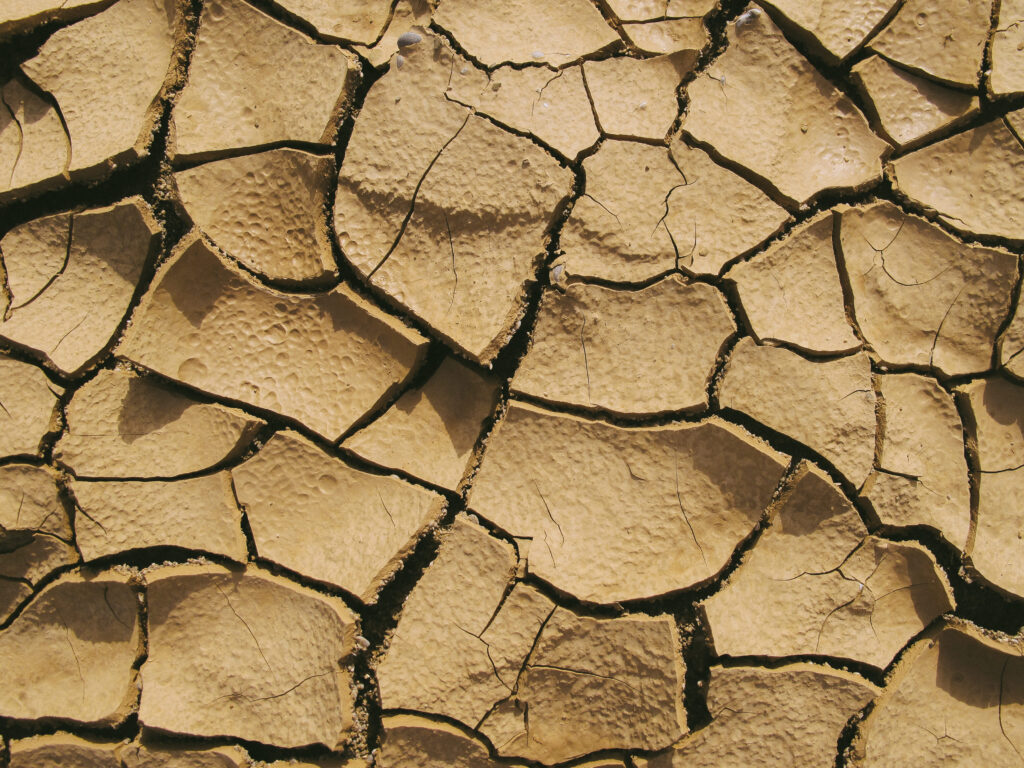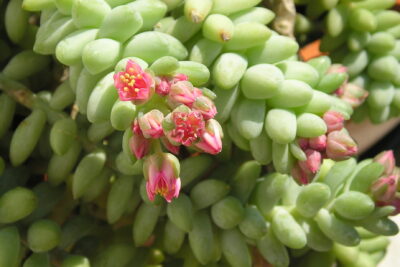
Thriving Succulents: Discover Fast-Growing Varieties

Succulents are a popular choice for plant enthusiasts due to their unique appearance, low maintenance requirements, and ability to thrive in various environments. These plants are known for their fleshy leaves, which allow them to store water and survive in arid conditions. However, not all succulents grow at the same rate, and some varieties are particularly known for their fast growth. Understanding these fast-growing succulents can be helpful for those looking to quickly fill up their gardens or indoor spaces with lush greenery.
We will explore some of the most fast-growing succulent varieties and provide tips on how to care for them. We will discuss the factors that contribute to their rapid growth, such as proper lighting, watering techniques, and soil composition. Additionally, we will highlight the benefits of incorporating fast-growing succulents into your garden or indoor collection, including their ability to quickly fill empty spaces and create a vibrant and lush atmosphere. Whether you are a seasoned succulent lover or just starting your plant journey, this article will provide you with valuable insights on how to cultivate thriving succulents that grow at an impressive pace.
- Choose succulents that are known for their fast growth
- Provide ample sunlight for your succulents to promote growth
- Use a well-draining soil mix to prevent root rot and promote healthy growth
- Water your succulents sparingly, allowing the soil to dry out between waterings
- Fertilize your succulents regularly with a balanced succulent fertilizer
- Prune your succulents to encourage branching and new growth
- Propagate your succulents by taking stem or leaf cuttings for even more plants
- Repot your succulents into larger containers as they grow to allow for continued growth
- Protect your succulents from extreme temperatures and frost to prevent damage and promote growth
- Keep an eye out for pests and diseases and take appropriate measures to treat them
- Choosing succulents that are known for their fast growth is key to thriving succulents
- Providing ample sunlight for your succulents is important to promote growth
- Using a well-draining soil mix will prevent root rot and promote healthy growth
- Watering your succulents sparingly and allowing the soil to dry out between waterings is essential
- Fertilizing your succulents regularly with a balanced succulent fertilizer is recommended
- Pruning your succulents will encourage branching and new growth
- Propagating your succulents by taking stem or leaf cuttings will result in more plants
- Repotting your succulents into larger containers as they grow will allow for continued growth
- Protecting your succulents from extreme temperatures and frost will prevent damage and promote growth
- Keeping an eye out for pests and diseases and taking appropriate measures to treat them is necessary
- Frequently Asked Questions
Choose succulents that are known for their fast growth
Succulents are known for their ability to thrive in low-maintenance conditions, making them a popular choice for both experienced and novice gardeners. If you're looking to add some fast-growing varieties to your collection, here are a few options to consider:
Jade Plant (Crassula ovata)
The Jade Plant is a classic succulent that is renowned for its rapid growth. With proper care, it can quickly fill out and become a stunning centerpiece in any garden or indoor space. This succulent prefers bright, indirect light and well-draining soil. Regular watering and occasional fertilization will help promote vigorous growth.
Snake Plant (Sansevieria trifasciata)
The Snake Plant, also known as the Mother-in-Law's Tongue, is a hardy succulent that can tolerate a wide range of growing conditions. It has a unique upright growth habit and striking, sword-shaped leaves. This succulent is perfect for those looking for a low-maintenance plant that grows quickly without much fuss.
Aloe Vera (Aloe vera)
Aloe Vera is not only a popular succulent for its medicinal properties but also for its fast growth. This versatile plant can thrive both indoors and outdoors, as long as it receives adequate sunlight and well-draining soil. Regular watering and occasional repotting will help encourage its rapid growth.
 Top Succulent Plants: Perfect Elephant Food for a Nutritious Feast
Top Succulent Plants: Perfect Elephant Food for a Nutritious FeastCrassula ovata 'Gollum' (Gollum Jade)
The Gollum Jade is a unique succulent with tubular, finger-like leaves. It is a fast-growing variety that can quickly form a dense, bushy plant. This succulent prefers bright, indirect light and well-draining soil. Regular pruning and occasional fertilization will help maintain its compact growth habit.
By choosing succulents that are known for their fast growth, you can enjoy a flourishing and vibrant collection in no time. Remember to provide them with the proper care they need, including adequate light, well-draining soil, and occasional maintenance, to ensure their optimal growth and longevity.
Provide ample sunlight for your succulents to promote growth
Succulents are known for their ability to thrive in bright, sunny conditions. To promote the growth of your succulents, it is essential to provide them with ample sunlight.
Place your succulents in an area where they can receive at least 6 hours of direct sunlight each day. This can be near a south-facing window or outdoors in a sunny spot.
Succulents love natural light, so make sure to avoid placing them in areas with too much shade. If you notice that your succulents are stretching or leaning towards the light, it is a sign that they are not receiving enough sunlight.
To ensure that your succulents receive even light distribution, rotate them every few weeks. This will prevent one side from receiving more light than the other, resulting in balanced growth.
 Discover Low-Maintenance Bush-Like Plants That Resemble Succulents
Discover Low-Maintenance Bush-Like Plants That Resemble SucculentsRemember: While succulents require sunlight for growth, it is crucial to protect them from intense midday sun, especially during the hot summer months. The intense heat can scorch their leaves and cause damage. Providing them with filtered sunlight or partial shade during the hottest part of the day will keep them happy and healthy.
Use a well-draining soil mix to prevent root rot and promote healthy growth
Succulents are known for their ability to thrive in arid conditions, making them a popular choice for indoor and outdoor gardens alike. However, to ensure the health and fast growth of your succulents, it is essential to use a well-draining soil mix.
Root rot is a common issue faced by succulent owners, especially if the soil retains too much moisture. To prevent this, opt for a soil mix that consists of equal parts of potting soil, perlite, and coarse sand. This blend allows excess water to drain away quickly, keeping the roots of your succulents dry and preventing rot.
Additionally, a well-draining soil mix promotes healthy growth by providing the right balance of nutrients. Succulents have unique nutritional needs, and a soil mix that drains well allows for better absorption of essential minerals and fertilizers.
Remember to repot your succulents every 1-2 years to ensure they have enough space to grow. During the repotting process, replace the old soil with a fresh well-draining mix to rejuvenate the plant's growth.
Overall, using a well-draining soil mix is crucial for preventing root rot and promoting fast growth in your succulents.
 Top Yellow Flowering Succulent Ground Cover Options for Your Garden
Top Yellow Flowering Succulent Ground Cover Options for Your GardenWater your succulents sparingly, allowing the soil to dry out between waterings
Succulents are known for their ability to store water in their leaves and stems, making them drought-tolerant plants. To ensure your succulents thrive, it's important to water them sparingly. Overwatering can lead to root rot and other issues, so it's crucial to let the soil dry out between waterings.
When watering your succulents, make sure to give them a thorough soak, allowing water to reach the roots. However, avoid leaving them in standing water, as this can lead to root rot. The frequency of watering will depend on various factors such as the climate, the specific succulent species, and the type of soil used.
One way to determine if your succulent needs water is to check the soil moisture level. Stick your finger about an inch into the soil, and if it feels dry, it's time to water. On the other hand, if the soil still feels moist, it's best to wait before watering again.
Signs of overwatering
- Yellowing or wilting leaves: When succulents receive too much water, their leaves may start to turn yellow or wilt. This is a sign of overwatering, and it's important to adjust your watering routine accordingly.
- Soft and mushy leaves: Overwatered succulents may develop soft and mushy leaves. If you notice this, it's a clear indication that you need to reduce watering frequency.
- Root rot: Excessive moisture coupled with poor drainage can lead to root rot. If you notice a foul smell or blackened, mushy roots, it's crucial to address the issue immediately by adjusting your watering habits and ensuring proper drainage.
Signs of underwatering
- Shriveled leaves: When succulents don't receive enough water, their leaves may appear wrinkled or shriveled. This is a clear sign that they need to be watered.
- Leaves falling off: Underwatered succulents may shed their leaves in an effort to conserve energy and survive. If you notice leaves dropping, it's important to increase watering frequency.
- Dry and brittle leaves: Lack of water can cause succulent leaves to become dry and brittle. If you gently touch the leaves and they break easily, it's a sign that your succulent needs more water.
By understanding the signs of overwatering and underwatering, you can adjust your watering routine accordingly and ensure your succulents thrive. Remember, it's better to underwater than overwater your succulents, as they are more resilient to drought than excessive moisture.
Fertilize your succulents regularly with a balanced succulent fertilizer
Fertilize your succulents regularly with a balanced succulent fertilizer
One of the key factors in ensuring the health and growth of your succulents is regular fertilization. Succulents have unique nutritional needs, and providing them with the right balance of nutrients is essential for their thriving growth. Using a specialized succulent fertilizer is highly recommended as it contains the necessary elements tailored to meet the specific requirements of these plants.
 Dramatic Succulents: Discover the Varieties with Striking, Long Leaves
Dramatic Succulents: Discover the Varieties with Striking, Long LeavesWhen choosing a succulent fertilizer, opt for a balanced formula that contains equal amounts of nitrogen (N), phosphorus (P), and potassium (K). This balanced ratio, often referred to as NPK, will provide your succulents with the nutrients they need for robust growth, vibrant foliage, and sturdy structure.
Applying the fertilizer on a regular basis is crucial, especially during the active growing season, which is typically spring and summer. It is recommended to fertilize your succulents once a month during this period. However, remember to adjust the frequency and dosage based on the specific requirements of the selected succulent variety.
When applying the fertilizer, make sure to dilute it according to the instructions provided by the manufacturer. Over-fertilizing succulents can lead to salt build-up in the soil, causing harm to the plants. Diluting the fertilizer ensures that the nutrients are distributed evenly and minimizes the risk of burning the roots.
Note: Before fertilizing your succulents, it is crucial to water them thoroughly. This will prevent the roots from absorbing the concentrated fertilizer solution, which can harm the plants.
For best results, it is also advisable to apply the fertilizer to moist soil. This allows the nutrients to penetrate the soil and reach the root system effectively. Avoid applying the fertilizer directly to the foliage, as it can cause burns or damage the delicate leaves of the succulents.
Remember, succulents are adapted to survive in nutrient-poor environments, so it is essential not to overdo the fertilization. Always follow the instructions provided by the fertilizer manufacturer and observe your plants' response to ensure optimal growth and health.
Prune your succulents to encourage branching and new growth
 Best Heat-Resistant Succulents: Thriving in High Temperatures
Best Heat-Resistant Succulents: Thriving in High TemperaturesPruning is an essential practice for succulent enthusiasts as it helps to stimulate branching and promote new growth. By removing the top parts of the plants, you can encourage the development of lateral shoots, resulting in a fuller and more compact appearance.
Here are some tips to keep in mind when pruning your succulents:
- Choose the right time: It's best to prune your succulents during their active growing season, which is typically in spring or early summer. Avoid pruning during the dormant period as it may hinder their ability to recover.
- Use clean tools: Before you start pruning, make sure your tools are sterilized to prevent the spread of diseases. You can clean them with rubbing alcohol or a mixture of bleach and water.
- Identify the right areas to prune: Look for areas with excessive growth or leggy stems that need to be trimmed. Focus on removing the top portion of the stem, leaving a few healthy leaves intact.
- Allow the wounds to dry: After pruning, it's important to let the cuts dry out and callus over before replanting or watering the succulents. This helps to prevent rot or infection.
- Keep the pruned parts for propagation: Don't throw away the pruned sections! You can easily propagate new succulents from the cuttings by allowing them to dry for a few days and then planting them in well-draining soil.
Remember, pruning should be done judiciously and with care. It's always better to start with minimal trimming and observe how your succulents respond before proceeding further. With proper pruning techniques, you can shape your succulents into beautiful, compact arrangements and enjoy their fast growth and vibrant appearance.
Propagate your succulents by taking stem or leaf cuttings for even more plants
Succulents are a popular choice for both experienced and novice gardeners due to their low maintenance and unique appearance. One of the most exciting aspects of growing succulents is the ability to propagate them, allowing you to expand your collection and share these beautiful plants with friends and family.
To propagate succulents, you can take stem or leaf cuttings from the parent plant. Both methods have their own advantages, and it's worth experimenting with both to see which works best for you.
Stem Cuttings
Stem cuttings involve cutting a section of the stem from the parent plant and allowing it to develop roots. This method is ideal for succulents that have a strong stem and are growing leggy or top-heavy. Here's how to propagate succulents using stem cuttings:
 Explore Stunning Tri Color Succulents: Discover Vibrant Varieties!
Explore Stunning Tri Color Succulents: Discover Vibrant Varieties!- Select a healthy stem: Look for a stem that is about 3-5 inches long and has several sets of leaves. Make sure the stem is not damaged or diseased.
- Cut the stem: Using a clean, sharp knife or pair of scissors, make a clean cut just below a leaf node. A leaf node is where the leaves attach to the stem.
- Remove the lower leaves: Gently remove the lower leaves from the stem, leaving a small stub. This will expose the nodes where the roots will develop.
- Allow the cutting to callus: Place the cutting in a warm, dry location for a few days to allow the cut end to callus. This helps prevent rot and promotes root development.
- Plant the cutting: Once the cutting has callused, you can plant it in a well-draining succulent soil mix. Make sure to bury the bottom node and leave the upper nodes exposed.
- Water sparingly: After planting, water the cutting lightly to settle the soil. Then, wait until the soil dries out completely before watering again. Overwatering can lead to root rot.
- Provide bright, indirect light: Place the newly planted cutting in a location with bright, indirect light. Avoid direct sunlight, as it can scorch the leaves.
Leaf Cuttings
Leaf cuttings involve removing a healthy leaf from the parent plant and allowing it to sprout new roots and eventually grow into a new succulent. This method is best suited for succulents with fleshy leaves, such as echeverias and sedums. Here's how to propagate succulents using leaf cuttings:
- Select a healthy leaf: Choose a plump, healthy leaf from the parent plant. Gently twist the leaf off the stem, ensuring that a small piece of the leaf's base is still attached.
- Let the leaf callus: Place the leaf in a warm, dry location for a few days to allow the cut end to callus. This helps prevent rot and promotes root development.
- Plant the leaf: Once the leaf has callused, you can plant it in a well-draining succulent soil mix. Lay the leaf flat on top of the soil, with the cut end inserted slightly into the soil.
- Wait for new growth: After planting, mist the leaf occasionally to keep it hydrated. Over time, new roots will develop from the base of the leaf, and a tiny rosette or new plantlet will emerge.
- Transplant the new plantlet: Once the new plantlet has grown a few sets of leaves, you can carefully separate it from the leaf and plant it in its own container or directly in the garden.
Remember, not all succulents can be propagated using leaf or stem cuttings. Some varieties, such as cacti, require different methods like grafting or division. It's essential to research the specific succulent species you want to propagate to ensure you're using the correct method.
By propagating your succulents, you can not only expand your collection but also create a sense of accomplishment and satisfaction as you witness new plants growing and thriving. So go ahead, experiment with stem and leaf cuttings, and enjoy the rewarding journey of propagating fast-growing succulents!
Repot your succulents into larger containers as they grow to allow for continued growth
Succulents, with their unique ability to store water in their leaves and stems, are known for their ability to thrive in arid conditions. These low-maintenance plants have gained popularity among gardening enthusiasts, as they not only add a touch of green to any space but also require minimal care.
As your succulents grow, it is essential to repot them into larger containers to ensure their continued growth and development. Repotting allows the roots to have enough space to spread out and absorb nutrients from the soil. Additionally, a larger container provides more stability, preventing the succulent from toppling over as it becomes top-heavy.
To successfully repot your succulent, follow these steps:
- Choose the right container: Select a container that is slightly larger than the current one. Ensure that the new container has drainage holes to prevent waterlogging, as succulents are susceptible to root rot.
- Prepare the potting mix: Succulents require well-draining soil to prevent their roots from sitting in water. You can create a suitable potting mix by combining equal parts of regular potting soil and perlite or pumice to improve drainage.
- Gently remove the succulent: Carefully remove the succulent from its current container by gently loosening the soil around the roots. Be cautious not to damage the delicate roots.
- Inspect and prune the roots: Check the roots for any signs of damage or rot. Trim off any dead or unhealthy roots using sterilized pruning shears.
- Place the succulent in the new container: Position the succulent in the center of the new container, ensuring that the top of the root ball is level with the rim of the container.
- Fill in with potting mix: Fill the gaps around the roots with the prepared potting mix, gently pressing it down to secure the plant. Leave a small gap at the top to allow for watering.
- Water and settle: After repotting, give the succulent a thorough watering to help settle the soil. Allow any excess water to drain out through the holes at the bottom of the container.
- Place in a suitable location: Finally, find a spot for your repotted succulent where it can receive adequate sunlight and airflow. Succulents generally thrive in bright, indirect light.
By repotting your succulents into larger containers, you are providing them with the space and resources they need to continue growing and flourishing. Remember to monitor their growth and repot them as necessary to ensure their well-being. With proper care, your succulents will reward you with their stunning beauty and resilience.
 Indoor Succulents: Soft-Leaved Varieties Available?
Indoor Succulents: Soft-Leaved Varieties Available?Protect your succulents from extreme temperatures and frost to prevent damage and promote growth
Succulents are known for their ability to thrive in harsh conditions, but extreme temperatures and frost can still cause damage to these resilient plants. To ensure the health and growth of your succulents, it's important to protect them from temperature fluctuations and frost.
1. Provide adequate insulation:
During periods of extreme heat or cold, it's crucial to provide your succulents with proper insulation. You can do this by placing them in containers that offer thermal protection, such as ceramic or clay pots. These materials help regulate temperature and prevent sudden temperature changes.
2. Use frost cloth:
If you live in an area prone to frost, consider using frost cloth to protect your succulents. This breathable fabric acts as a barrier, shielding your plants from freezing temperatures while still allowing air and sunlight to reach them.
3. Avoid overwatering:
 Exploring the Unique World of Blue Succulent Plants: Are They Real?
Exploring the Unique World of Blue Succulent Plants: Are They Real?Succulents are adapted to survive in arid conditions, so overwatering can be detrimental to their health. During colder months, reduce watering frequency to prevent the soil from becoming waterlogged, which can lead to root rot. It's best to water your succulents sparingly and allow the soil to dry out between waterings.
4. Provide shelter:
If you have succulents planted in the ground, consider providing them with some form of shelter, such as a garden cloche or a temporary greenhouse. These structures can offer protection from extreme weather conditions, including frost and strong winds.
5. Monitor temperature:
Keep a close eye on the weather forecast and monitor the temperature regularly. This will help you anticipate any potential threats to your succulents and take necessary precautions in advance.
6. Move indoors:
If temperatures are predicted to drop significantly or a frost warning is issued, it may be best to bring your potted succulents indoors. Place them in a well-lit area near a window where they can still receive adequate sunlight.
 Uncover Profitable Succulent Varieties for Lucrative Returns
Uncover Profitable Succulent Varieties for Lucrative ReturnsBy taking these steps to protect your succulents from extreme temperatures and frost, you can ensure their well-being and promote their growth. Remember, a little care goes a long way in helping your succulents thrive!
Keep an eye out for pests and diseases and take appropriate measures to treat them
Pests and diseases can pose a threat to the health and growth of your succulents. It is important to keep an eye out for any signs of infestation or disease and take immediate measures to treat them. Here are some common pests and diseases that can affect succulents:
Pests:
- Mealybugs: These small, white, cotton-like insects can be found on the leaves and stems of succulents. They feed on the plant's sap, causing damage and weakening the plant.
- Aphids: These tiny insects can be green, black, or brown in color. They suck the sap from the leaves and stems, causing stunted growth and deformities.
- Spider Mites: These tiny pests are barely visible to the naked eye. They feed on the plant's juices, causing yellowing and curling of the leaves.
Diseases:
- Root Rot: This is a common disease caused by overwatering or poor drainage. The roots become mushy and discolored, leading to the death of the plant.
- Leaf Spot: Leaf spot is characterized by dark, discolored spots on the leaves. It is usually caused by fungal infections and can lead to the withering of the affected leaves.
- Powdery Mildew: Powdery mildew appears as a white, powdery substance on the leaves. It is caused by fungal infections and can hinder the plant's growth and overall health.
To treat pests, you can use insecticidal soap or a mixture of water and dish soap to spray the affected areas. For diseases, it's important to remove any infected leaves or parts of the plant and ensure proper air circulation to prevent further spread.
Preventing pests and diseases is key to maintaining healthy succulents. Regularly inspect your plants, provide them with proper care, and keep them in optimal growing conditions to minimize the risk of infestation or disease.
Choosing succulents that are known for their fast growth is key to thriving succulents
When it comes to succulents, choosing the right varieties can make all the difference in ensuring their growth and overall health. If you're looking to add some fast-growing succulents to your collection, here are a few varieties that are known for their speedy growth.
 Top Succulents for Thriving in Texas Climate: A Comprehensive Guide
Top Succulents for Thriving in Texas Climate: A Comprehensive Guide1. Jade Plant (Crassula ovata)
The Jade Plant, also known as Crassula ovata, is a popular succulent known for its rapid growth. With its thick, fleshy leaves and tree-like appearance, this succulent can quickly fill out any space in your garden or indoor plant collection. It thrives in bright, indirect light and requires minimal watering.
2. Echeveria (Echeveria spp.)
Echeverias are a diverse group of succulents that come in various shapes, sizes, and colors. These rosette-shaped succulents can quickly produce offsets, allowing them to multiply rapidly. They prefer bright sunlight and well-draining soil, making them an excellent choice for both indoor and outdoor gardens.
3. Aloe Vera (Aloe barbadensis)
Aloe Vera is not only a popular succulent for its medicinal properties but also for its rapid growth. This versatile succulent can thrive in a wide range of conditions, from full sun to partial shade. With its ability to produce numerous pups or "babies", your Aloe Vera plant can soon become a lush cluster of succulents.
4. Sedum (Sedum spp.)
Sedums, also known as stonecrops, are a diverse group of succulents that grow quickly and effortlessly. These hardy succulents can adapt to various climates and soil conditions, making them a great choice for beginners. With their vibrant flowers and attractive foliage, Sedums are perfect for adding a pop of color to your garden.
5. Kalanchoe (Kalanchoe spp.)
Kalanchoe is a genus of succulents that includes several species known for their rapid growth. These plants feature thick, waxy leaves and produce beautiful clusters of flowers. Kalanchoes are easy to care for and can thrive in a wide range of conditions, making them a popular choice for indoor gardening.
By incorporating these fast-growing succulents into your collection, you can create a thriving succulent garden that will quickly fill out and provide visual interest. Whether you're a beginner or an experienced gardener, these varieties are sure to impress with their speedy growth and unique characteristics.
Providing ample sunlight for your succulents is important to promote growth
When it comes to growing succulents, providing ample sunlight is crucial for their growth and overall health. Succulents are known for their ability to thrive in dry and arid conditions, but they still require a good amount of sunlight to flourish.
Succulents are sun-loving plants that have adapted to survive in environments with intense sunlight. They have thick, fleshy leaves and stems that store water, allowing them to endure long periods of drought. However, without sufficient sunlight, succulents may become weak and leggy, losing their characteristic compact and vibrant appearance.
To ensure your succulents thrive, it's important to place them in a spot that receives at least six hours of direct sunlight each day. This could be a sunny windowsill, a balcony, or a well-lit area in your garden. If you're growing succulents indoors, you can also use grow lights to supplement the sunlight they receive.
When positioning your succulents, keep in mind that different varieties have varying sunlight requirements. Some succulents, like Echeverias and Sedums, prefer full sun and can tolerate intense heat. On the other hand, certain species, such as Haworthias and Gasterias, thrive in partial shade and should be protected from direct sunlight during the hottest parts of the day.
It's important to monitor your succulents closely to ensure they are receiving the right amount of sunlight. If you notice your succulents stretching or leaning towards the light source, it may be an indication that they need more sunlight. On the other hand, if you observe signs of sunburn, such as brown or yellow patches on the leaves, it's a sign that your succulents are getting too much direct sunlight.
Remember to rotate your succulents regularly to promote even growth. As they tend to lean towards the light source, rotating them every few weeks will help prevent them from becoming lopsided or uneven.
Providing your succulents with ample sunlight is essential for their growth and vitality. By understanding their specific sunlight requirements and providing the right conditions, you can ensure your succulents thrive and showcase their stunning beauty.
Using a well-draining soil mix will prevent root rot and promote healthy growth
When it comes to succulents, using a well-draining soil mix is crucial for their survival and growth. These plants have adapted to thrive in arid conditions, and excess moisture can lead to root rot and eventual death.
To create a suitable soil mix for your succulents, start with a combination of regular potting soil and coarse sand. This mixture helps to improve drainage and prevents water from sitting around the roots for too long.
Another option is to use a specialized succulent or cactus potting mix, which is readily available in garden centers. These mixes are specifically formulated to provide the ideal balance of drainage and moisture retention for succulents.
Pro tip: Adding perlite or pumice to your soil mix can further enhance drainage and prevent compaction. These lightweight materials create air pockets in the soil, allowing excess water to escape and ensuring that the roots have access to oxygen.
Choosing fast-growing succulent varieties
While succulents are known for their slow growth, there are a few varieties that buck the trend and grow relatively faster. These fast-growing succulents can quickly fill out a container or garden bed, providing a lush and vibrant display.
- Jade Plant (Crassula ovata): This popular succulent has thick, glossy leaves and a tree-like growth habit. With proper care, it can grow several inches per year and reach a height of up to 3 feet.
- Snake Plant (Sansevieria trifasciata): Known for its striking vertical leaves, the snake plant can grow rapidly in the right conditions. It tolerates low light levels and neglect, making it an excellent choice for beginners.
- Stonecrop (Sedum spp.): Stonecrop varieties, such as Sedum rubrotinctum or Sedum morganianum, are known for their trailing or cascading growth. These succulents can quickly fill out hanging baskets or spill over the edges of containers.
Pro tip: To encourage faster growth in succulents, provide them with ample sunlight, well-draining soil, and regular fertilization during the growing season. However, be cautious not to overwater, as this can lead to root rot.
By selecting fast-growing succulent varieties and providing them with the proper care, you can create a thriving succulent collection that adds beauty and interest to your home or garden.
Watering your succulents sparingly and allowing the soil to dry out between waterings is essential
When it comes to succulents, one of the most important things to remember is that they thrive in dry conditions. These plants have adapted to survive in arid environments by storing water in their leaves, stems, and roots. Therefore, overwatering can be detrimental to their health.
It is recommended to water your succulents sparingly. Let the soil completely dry out between waterings to mimic their natural habitat. This will prevent root rot and other water-related issues that can lead to the demise of your beloved succulents.
When you do water your succulents, make sure to do it thoroughly. Water them until the excess water drains out from the bottom of the pot. This ensures that the entire root system receives moisture and helps prevent the build-up of salts in the soil.
Remember, succulents are low-maintenance plants that are adapted to survive in harsh conditions. By providing them with the right amount of water, you can help them thrive and grow at a rapid pace.
Fertilizing your succulents regularly with a balanced succulent fertilizer is recommended
Why Fertilize Succulents?
Fertilizing your succulents regularly with a balanced succulent fertilizer is highly recommended for their optimal growth and health. Succulents are known for their ability to store water in their leaves, stems, and roots, which allows them to thrive in arid conditions. However, this unique adaptation also means that they have specific nutritional needs that must be met to ensure their well-being.
The Benefits of Using a Balanced Succulent Fertilizer
A balanced succulent fertilizer provides essential nutrients that may be lacking in the soil or depleted over time. These nutrients include nitrogen, phosphorus, and potassium, as well as trace elements like iron, magnesium, and calcium. By supplying these nutrients, you can promote strong root development, vibrant foliage color, and overall plant growth.
When to Fertilize Succulents
It is important to fertilize your succulents during their active growing season, which typically occurs in spring and summer. During this time, succulents are actively producing new growth and require additional nutrients to support their development. Avoid fertilizing during the dormant period, which usually takes place in fall and winter, as succulents require less fertilization during this time.
How to Fertilize Succulents
When fertilizing your succulents, it is crucial to follow the instructions provided on the succulent fertilizer packaging. Typically, you will dilute the fertilizer with water according to the recommended ratio. Avoid over-fertilizing, as this can lead to nutrient burn, causing damage to your plants. It is better to under-fertilize than to overdo it.
Choosing the Right Succulent Fertilizer
There are various succulent fertilizers available in the market, and it is important to choose one that is specifically formulated for succulents. Look for a balanced fertilizer with a ratio of NPK (nitrogen, phosphorus, and potassium) that is suitable for succulent plants. Additionally, consider opting for organic or slow-release fertilizers for a more sustainable and long-lasting nutrient supply.
Fertilizing your succulents with a balanced succulent fertilizer is crucial for their growth, color, and overall vitality. By providing the necessary nutrients, you can help your succulents thrive and flourish. Remember to fertilize during the active growing season, follow the instructions carefully, and choose a fertilizer specifically designed for succulents. With proper fertilization, you can enjoy fast-growing and healthy succulent plants in your garden or indoor collection.
Pruning your succulents will encourage branching and new growth
Pruning is an essential practice for maintaining the health and appearance of your succulent plants. By selectively removing certain parts of the plant, you can stimulate the growth of new branches and encourage a bushier, more compact form.
When it comes to pruning succulents, it's important to understand the different types of growth habits they have. Some succulents naturally develop a single stem or rosette shape, while others produce multiple stems or offsets. Knowing the growth habit of your succulent will guide you in determining where and how to prune.
Why should you prune your succulents?
Pruning your succulents serves several purposes:
- Encourages branching: By removing the top portion of the stem, you can stimulate the production of lateral stems, resulting in a fuller and more compact plant.
- Promotes new growth: Pruning stimulates the plant to produce new leaves and offsets, leading to a healthier and more vibrant succulent.
- Improves airflow and prevents disease: Trimming away dead or overcrowded leaves helps to improve air circulation around the plant, reducing the risk of fungal infections and rot.
- Controls size and shape: Pruning allows you to manage the size and shape of your succulent, preventing it from becoming too leggy or unruly.
When should you prune your succulents?
The best time to prune your succulents is during their active growth period, which is typically in spring and summer. Avoid pruning during the dormant winter months as it may hinder the plant's ability to recover and regrow.
It's also important to observe your succulent's growth patterns before pruning. Wait until your succulent has reached a desirable size or until you notice signs of excessive stretching or legginess.
How to prune your succulents
Follow these steps to properly prune your succulents:
- Gather the necessary tools: Use a clean and sharp pair of pruning shears or scissors to make clean cuts without causing damage to the plant.
- Identify the areas to prune: Look for stems that have become too long, leggy, or overcrowded. Focus on removing the top portion of the stem to encourage branching.
- Make clean cuts: Position your pruning tool just above a leaf node or stem junction and make a clean cut at a slight angle. Avoid cutting too close to the base of the plant to prevent damage.
- Remove any dead or diseased leaves: Trim away any yellowed, withered, or diseased leaves to maintain the overall health of the succulent.
- Allow the plant to heal: After pruning, it's important to allow the cuts to dry and callus over for a few days before watering the succulent again.
Remember, each succulent species may have specific pruning requirements, so it's always a good idea to research and understand the needs of your particular plant before pruning.
By incorporating regular pruning into your succulent care routine, you can help your plants thrive and maintain their beautiful appearance for years to come.
Propagating your succulents by taking stem or leaf cuttings will result in more plants
Succulents are known for their ability to propagate easily, making them an ideal choice for plant enthusiasts looking to expand their collection. One of the most common and successful methods of propagation is by taking stem or leaf cuttings. By following a few simple steps, you can ensure the growth of new plants and enjoy a thriving succulent garden.
To begin, choose a healthy succulent plant with strong stems and leaves. It's important to select a mature plant that has reached its full growth potential. This will ensure that the cuttings you take have the best chance of developing into new plants.
Next, gather your tools. You will need a clean, sharp pair of scissors or garden shears to make the cuttings. It's crucial to use clean tools to prevent the spread of any potential diseases or pests to your succulents.
When taking stem cuttings, look for sections of the plant that have several sets of leaves. Using your scissors, make a clean cut just below the set of leaves, ensuring that you have at least 2-3 inches of stem. Remove any lower leaves, leaving only a few sets at the top.
If you prefer to propagate using leaf cuttings, gently twist or cut off a healthy leaf from the main plant. Be sure to choose a firm, plump leaf that is free from any damage or disease. Allow the leaf to dry for a few days until a callus forms at the base.
Once you have your cuttings ready, it's time to prepare the soil. Succulents prefer well-draining soil, so mix equal parts of potting soil and perlite or sand. Fill a small pot or container with this mixture, ensuring it is slightly moist but not overly wet.
Place your stem or leaf cuttings on top of the soil, gently pressing them down to ensure good contact. If using stem cuttings, bury the bottom inch of the stem into the soil. For leaf cuttings, simply place the callused end on the soil surface.
After planting, mist the cuttings with water to provide some moisture. Avoid overwatering, as succulents are prone to rotting if their soil is consistently wet. Place the pot in a bright area with indirect sunlight, as direct sunlight may scorch the delicate cuttings.
Over the next few weeks, keep a close eye on your cuttings. Mist them occasionally to maintain some moisture in the soil, but allow the top inch of soil to dry out between waterings. Within a few weeks, you should start to see signs of new growth.
As the new plants develop, you can gradually decrease the frequency of watering and transition them to their own individual pots. Once they have established strong root systems, treat them as you would any other mature succulent, providing them with the appropriate amount of sunlight and water.
By propagating your succulents through stem or leaf cuttings, you can quickly expand your collection and enjoy the satisfaction of growing new plants. With a little patience and care, your succulent garden will thrive with vibrant and healthy specimens.
Repotting your succulents into larger containers as they grow will allow for continued growth
One of the keys to thriving succulents is providing them with enough space to grow. As your succulents start to outgrow their current containers, it's important to repot them into larger pots to accommodate their growth.
When succulents are confined to small containers, their roots become cramped, limiting their ability to absorb nutrients and water from the soil. By repotting them into larger containers, you give their roots room to spread out, promoting healthier growth.
Here are a few steps to follow when repotting your succulents:
- Choose the right pot: Select a pot that is one size larger than the current one. Ensure it has drainage holes to prevent waterlogging, which can lead to root rot.
- Prepare the new pot: Fill the new pot with well-draining soil specifically formulated for succulents. You can also create your own succulent soil mix by combining regular potting soil with coarse sand or perlite.
- Gently remove the succulent: Carefully loosen the soil around the succulent to avoid damaging the roots. Slowly lift the plant out of its current pot, supporting the base of the plant with your hand.
- Inspect the roots: Take a moment to examine the roots for any signs of rot or damage. Trim off any unhealthy roots using sterilized pruning shears.
- Place the succulent in the new pot: Position the succulent in the center of the new pot, making sure it's at the same depth as it was in the previous container.
- Backfill with soil: Gently fill in the gaps around the succulent with the prepared succulent soil mix, ensuring the roots are covered but not buried too deeply.
- Allow for settling: After repotting, lightly water the succulent to help settle the soil and remove any air pockets. Avoid overwatering, as succulents prefer drier conditions.
Remember, repotting your succulents into larger containers should be done when they outgrow their current pots. By giving them the space they need, you'll be supporting their continued growth and ensuring they thrive in your care.
Protecting your succulents from extreme temperatures and frost will prevent damage and promote growth
When it comes to succulents, proper care is essential to ensure they thrive and grow beautifully. One crucial aspect of caring for succulents is protecting them from extreme temperatures and frost. Failure to do so can result in damage to the plants and hinder their growth.
Why is temperature protection important?
Succulents are known for their ability to withstand hot and dry conditions. However, extreme temperatures, whether hot or cold, can still harm these resilient plants. When exposed to intense heat, succulents may become dehydrated and wilt, leading to a decline in their overall health. On the other hand, freezing temperatures can cause cellular damage, resulting in discoloration, rot, and even death of the plant.
Tips for protecting succulents from extreme temperatures and frost
Here are some effective ways to shield your succulents from the adverse effects of extreme temperatures:
- Provide shade: If you live in an area with scorching summers, it's crucial to offer your succulents some shade during the hottest parts of the day. This can be achieved by placing them under a shade cloth or in a location that receives filtered sunlight.
- Use mulch: Applying a layer of organic mulch around your succulents helps regulate soil temperature and retain moisture. This insulation can prevent the roots from being exposed to extreme heat or cold.
- Bring them indoors: When a cold snap or frost is expected, it's best to bring your potted succulents indoors. Find a bright location with sufficient sunlight, such as a south-facing window, to ensure they continue to receive the light they need.
- Utilize frost cloths: In regions prone to frost, covering your outdoor succulents with frost cloths or blankets provides an extra layer of protection. These lightweight fabrics trap heat and prevent cold air from reaching the plants.
- Ensure proper drainage: Adequate drainage is crucial for succulents as it prevents waterlogged soil, which can lead to root rot. Excess moisture in the soil can make succulents more susceptible to cold damage. Make sure your pots have drainage holes and use a well-draining soil mix.
By implementing these measures, you can safeguard your succulents from extreme temperatures and frost, allowing them to thrive and grow to their full potential. Remember, a little extra care goes a long way in ensuring the health and beauty of your succulent collection.
Keeping an eye out for pests and diseases and taking appropriate measures to treat them is necessary
Succulents are generally hardy plants, but they are not immune to pests and diseases. It is crucial to regularly inspect your succulents for any signs of infestation or infection. By identifying and treating these issues early on, you can ensure that your succulents continue to thrive.
Pests
Succulents can fall victim to various pests, including mealybugs, aphids, and scale insects. These pests feed on the sap of the plants, causing damage to the leaves and stems. If left untreated, they can weaken the succulents and even lead to their eventual death.
To combat pests, you can use natural methods such as spraying a mixture of water and mild dish soap onto the affected areas. This helps suffocate the pests and prevents them from spreading. Another option is to introduce beneficial insects like ladybugs or lacewings, which prey on common succulent pests.
If the infestation is severe, you may need to resort to chemical pesticides. However, exercise caution and make sure to choose a pesticide specifically formulated for succulents. Always follow the instructions carefully to avoid harming the plants or the environment.
Diseases
Succulents can also be susceptible to certain diseases, including fungal infections such as root rot and powdery mildew. These diseases often occur as a result of overwatering or poor air circulation around the plants.
To prevent fungal infections, it is crucial to provide well-draining soil for your succulents. Avoid overwatering and allow the soil to dry out between waterings. Additionally, ensure that your succulents are placed in an area with good airflow to reduce the risk of fungal growth.
If you notice signs of disease, such as discoloration, wilting, or unusual growth, it is important to take immediate action. Remove the affected parts of the plant using sterilized tools and treat the remaining areas with a fungicide specifically designed for succulents.
Note: It is always best to prevent pests and diseases by maintaining proper care practices for your succulents. Regularly inspect your plants, provide optimal growing conditions, and avoid overwatering or excessive fertilization.
By being vigilant and proactive in dealing with pests and diseases, you can ensure that your succulents stay healthy and continue to thrive in your care.
Frequently Asked Questions
1. What are succulents?
Succulents are plants that store water in their leaves, stems, or roots, allowing them to survive in dry conditions.
2. What are some fast-growing succulent varieties?
Some fast-growing succulent varieties include Echeveria, Sedum, and Crassula.
3. How often should I water my succulents?
Succulents should be watered sparingly, allowing the soil to dry out completely between waterings. Typically, once every 1-2 weeks is sufficient.
4. Do succulents need a lot of sunlight?
Most succulents thrive in bright, indirect sunlight. However, some varieties can tolerate lower light conditions, but they may grow more slowly.
If you want to read more articles similar to Thriving Succulents: Discover Fast-Growing Varieties, you can visit the Varieties and Colors category.






You Must Read